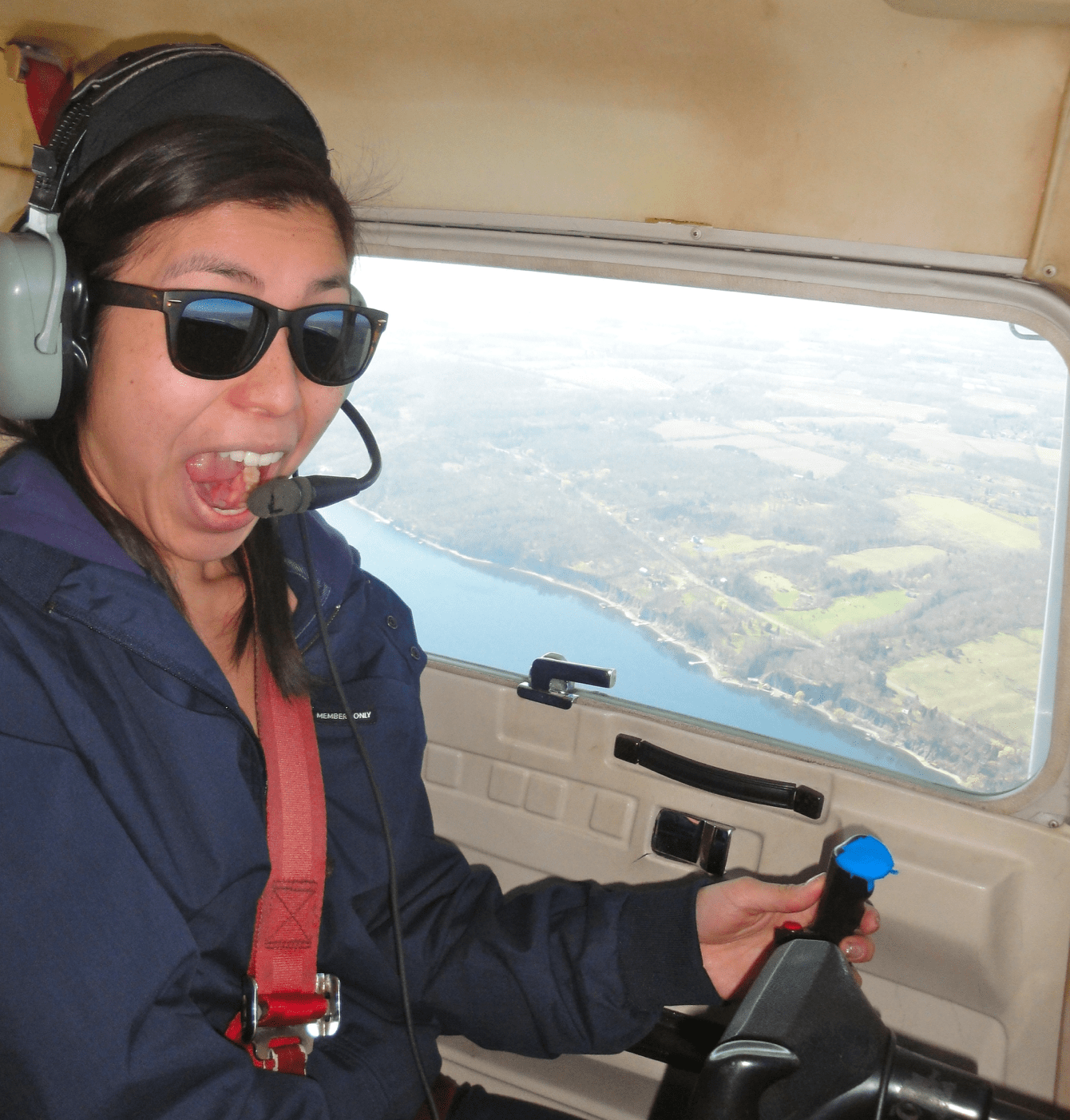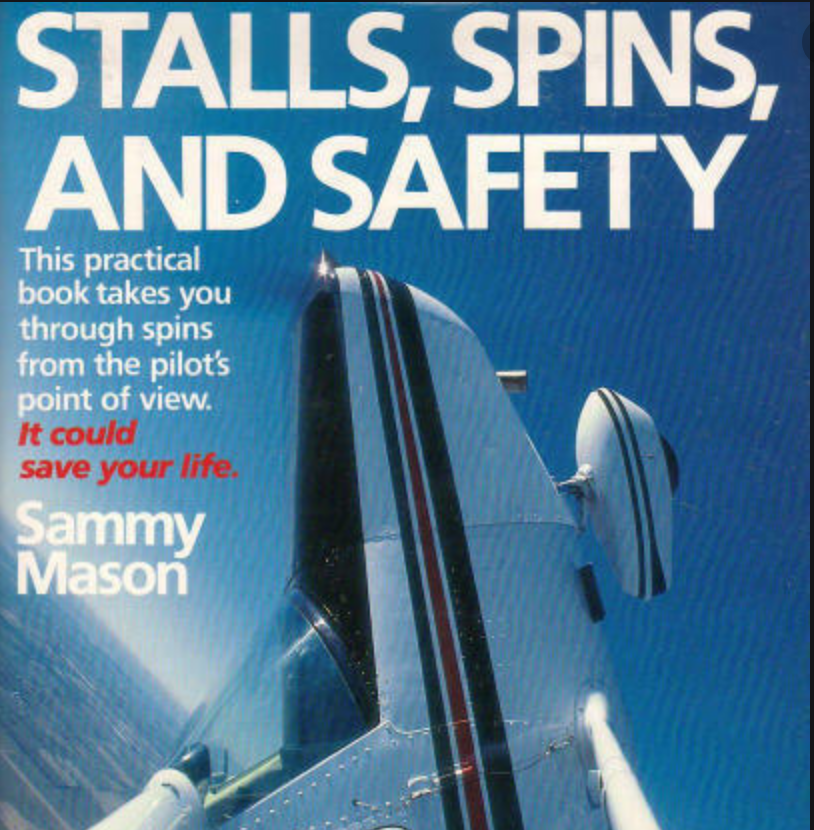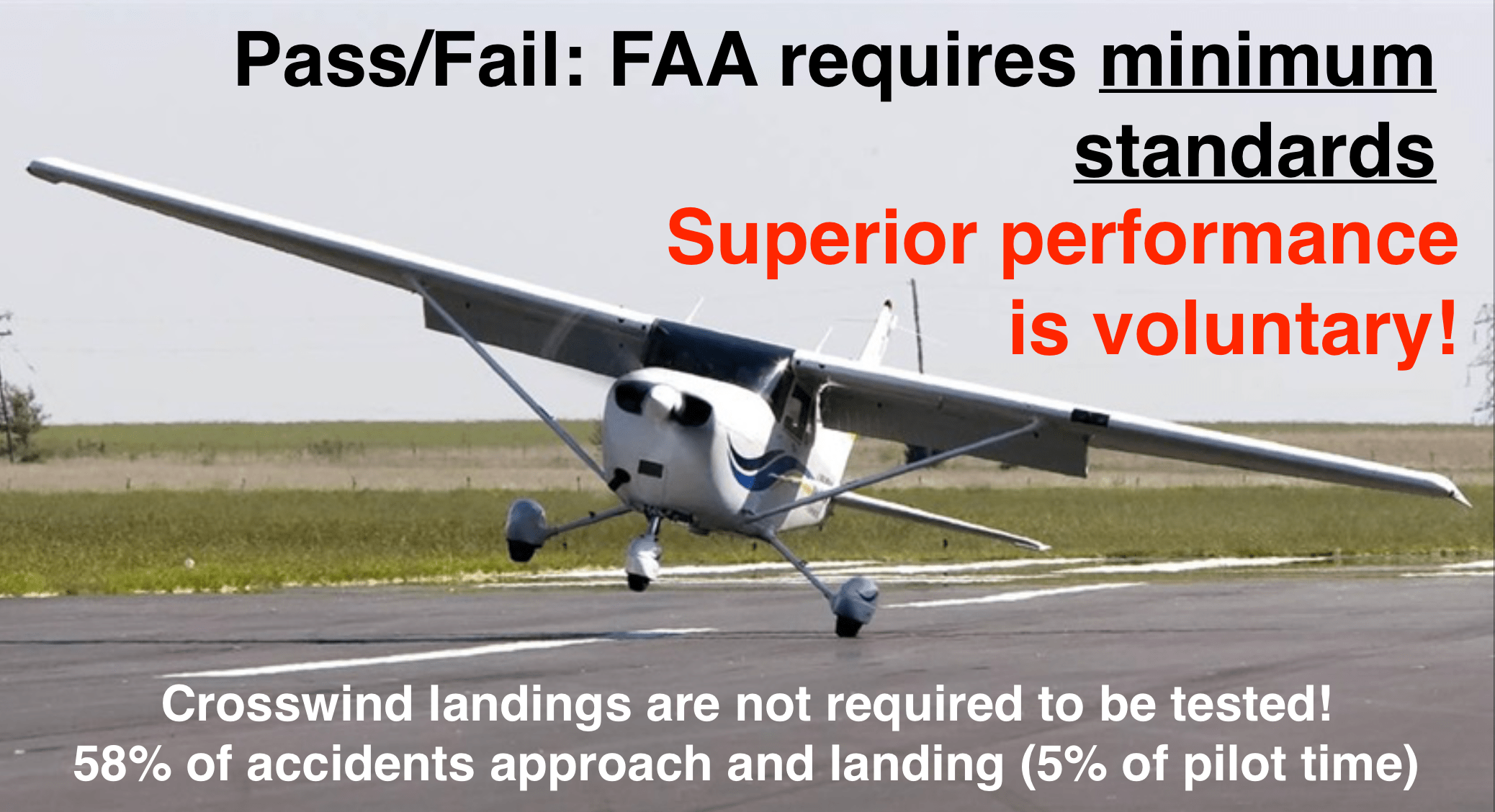Yeah, sounds dumb right? Training crosswinds at 3,ooo feet? But those 5-10 seconds of terror right over the runway are not an opportunity for nuanced description and durable learning. Teaching rudder patiently and accurately at altitude builds basic skills that transfer perfectly to the pattern. Deconstructing any complex maneuver to teach the component parts first makes learning something complex like crosswind landings a predictable and efficient process. No more terror on short final and flare worrying if your student “will lose it?” And good crosswind landings are a rare skill in our pilot world.
In prior blogs we discussed rudder for basic “yaw-canceling,” first as a training exercise, then applied to real-world flying. We also emphasized the need for coordinated patterns (especially climbing turns) in normal operations. This blog covers the more advanced rudder demands where we intentionally create yaw for maneuvers like crosswinds and this is best learned at altitude.
 Start by clearing the area while flying at a safe altitude. Then slow to approach cruise or top of the white arc and have your client move the nose of the plane right and left while maintaining the wings level with opposite aileron. Initially this is very difficult for most people, especially if you did your initial “coordinate or die” training correctly. Inducing yaw can initially just seem wrong. But moving the controls in opposite directions and yawing the plane is a critical skill in crosswind landings. Maintaining rudder pressure to hold the aircraft nose on a point is exactly what is required in a crosswind landing.
Start by clearing the area while flying at a safe altitude. Then slow to approach cruise or top of the white arc and have your client move the nose of the plane right and left while maintaining the wings level with opposite aileron. Initially this is very difficult for most people, especially if you did your initial “coordinate or die” training correctly. Inducing yaw can initially just seem wrong. But moving the controls in opposite directions and yawing the plane is a critical skill in crosswind landings. Maintaining rudder pressure to hold the aircraft nose on a point is exactly what is required in a crosswind landing.
Once this basic “horizon sliding” is mastered, carry this skill development exercise further by raising the nose on a straight vertical line up to a Vx picture. As mentioned in a previous blog, this will require appropriate right rudder to cancel the yaw created. Try to also draw a straight line down to bring the nose back on the horizon. The finished form of this maneuver is sketching a complete square box in the sky with nice straight lines and no wiggling. “Rudder boxing” is an old school training maneuver that teaches very accurate control of the nose position. It is also a wonderful tool to remove the attention from the conscious manual control and direct attention entirely outside to creating a performance result.
 Now try banking while applying opposite rudder pressure to keep the plane from turning maintaining the nose on a point on the horizon. Carry this right to the limit of the rudder travel (full slip) and perform it in both directions. Try alternating back and forth in a rhythmic fashion. Many good exercises are described nicely in Sammy Mason’s book Stalls, Spins and Safety. Review the previously mentioned coordinated “Dutch Rolls” too at speeds just above a stall where adverse yaw is more pronounced.
Now try banking while applying opposite rudder pressure to keep the plane from turning maintaining the nose on a point on the horizon. Carry this right to the limit of the rudder travel (full slip) and perform it in both directions. Try alternating back and forth in a rhythmic fashion. Many good exercises are described nicely in Sammy Mason’s book Stalls, Spins and Safety. Review the previously mentioned coordinated “Dutch Rolls” too at speeds just above a stall where adverse yaw is more pronounced.
After a few repetitions of these skill-building maneuvers at altitude, fly a crosswind landing and try some low centerline slow flight passes all the way down the centerline as described in an earlier blog. Vary the airplane configuration from a coordinated crab, tracking the centerline, to a slip to compensate for drift. Finally demonstrate some crosswind landings on just one wheel. Maintaining the landing on one wheel is quite easy with a little power and builds confidence while emphasizing the stability (and necessity) of this flight attitude. A very common error during crosswind landing for most new or inexperienced pilots is to release the control pressure countering the wind immediately on touchdown. The correct method is to increase the aileron pressure and deflection into the wind as the plane deaccelerates (especially after it has touched down). Lack of this essential follow-through creates a rolling motion away from the wind and creates a potentially dangerous situation; a bad habit to avoid.

The crosswind landing is one of the most difficult maneuvers to master and maintain proficiency in, and one of the primary sources of landing accidents. But ironically, it is not required to be demonstrated in any of the FAA evaluation standards. DPEs usually see a discontinuance if the crosswind goes much over 6 knots. I am not sure if that is good risk management or pathetic pilot preparation. A pilot will not get much utility from their pilot certificate with that level of landing skill (and it seems skills seldom increase after the test). I personally advocate for full crosswind proficiency in all pilots even though it is not required on any FAA test. Please let me know how these techniques work for you. More “radical rudder” soon. We will teach deconstructing as an instructional technique at our upcoming SAFE CFI-PRO™ workshop. Fly safely out there (and often)!
 Other skills at the SAFE CFI-PRO™ workshop include the CFI as evaluator. We also cover “client-focused” flight training. We need to fix our 80% drop out rate during initial flight training.
Other skills at the SAFE CFI-PRO™ workshop include the CFI as evaluator. We also cover “client-focused” flight training. We need to fix our 80% drop out rate during initial flight training.
Join SAFE to support our safety mission of generating aviation excellence in teaching and flying. Our amazing member benefits pay back your contribution (1/3 off your ForeFlight subscription)! Our FREE SAFE Toolkit App puts required pilot endorsements and experience requirements right on your smartphone and facilitate CFI+DPE teamwork. Our CFI insurance was developed by SAFE specifically for CFIs (and is the best value in the business).
